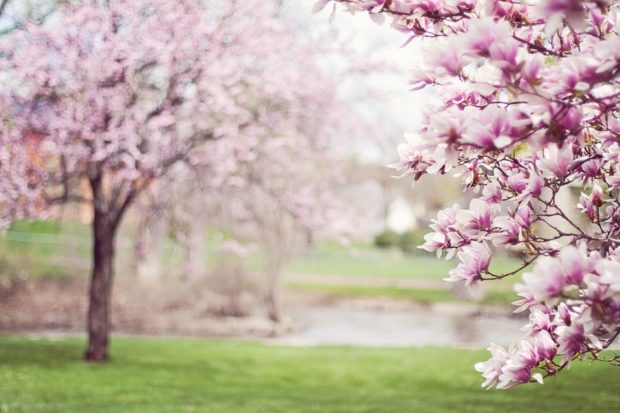Springtime! It is the most exciting time of the year for almost every nature lover out there. The spring season is that time of year when the flowers bloom in their brightest hues, the trees are greener than ever and the weather is just right — not too cold, not too hot. This is also the best time to do some cleaning, gardening and just an overall revamp of your home. For tips on how to make your garden and lawn ready for spring, read on.

1. Buy Seeds During the Fall
Yes! The best time to buy seeds you will be needing for spring planting is during the fall season. You get the best deals during fall because suppliers and stores want to phase out as much stock as possible before the winter comes (when everybody knows you cannot plant). By doing so, you can save money and invest in more gardening products.
2. Prep Your Garden Tools
Springtime is the best time to oil, repair, sharpen and revitalize the garden tools which you may have neglected during the chilly winter season. You can usually just clean them off with warm, soapy water. However, a different cleaning process is needed for severely rusted tools. Dr. Leonard Perry, Extension Professor of University of Vermont suggests that “you may need to use rough sandpaper, and even perhaps a wire bristle brush.” He further adds, “For the most rusted, you may need to use a drill with a wire brush attachment. For the latter in particular, make sure to wear safety glasses. Then make sure to wipe and coat with oil.” Also, when dealing with tools with wooden handles, mineral spirits are the best and most appropriate cleanser to avert wood splintering.
3. Do Not Overwater Your Lawn or Garden
One of the biggest and most commonly made rookie gardening mistake is overwatering the soil. The long haul of winter can make the soil very wet and moist. Overwatering the lawn may cause serious problems like the lawn being a little too vulnerable to weeds, pests and diseases. The most serious of all is that overwatering can lead to the lawn having a shallow root system. This is the reason why the ideal watering protocol in lawns is deep and infrequent watering, one that mimics natural rainfall.
However, before watering your lawn deeply, you first need to make sure that the soil is viable for deep watering. You can buy soil test kits at the nearest hardware or gardening store, or you can test it manually by taking a screwdriver or the like and pushing it into the soil. If the tool sinks easily then your soil is still moist and does not need deep watering.You can do deep watering when the soil begins to feel grainy — generally during the hot summer months.
4. Banish the Weeds in Preparation For Spring Planting
You may have noticed that weeds generally increase over the winter and during the dawn of spring. This is because they start to grow during the winter and most people do not really tend their gardens during the chilly winter season. You can manually remove weeds from your garden and lawn by hand. But for gardens and lawns with severe weed growth, a weed killer may be advisable.
Mulching is also good to prevent further weed growth. As a matter of fact, according to Fine Gardening, organic mulches can actually host crickets and carabid beetles, which seek out and devour thousands of weed seeds.



